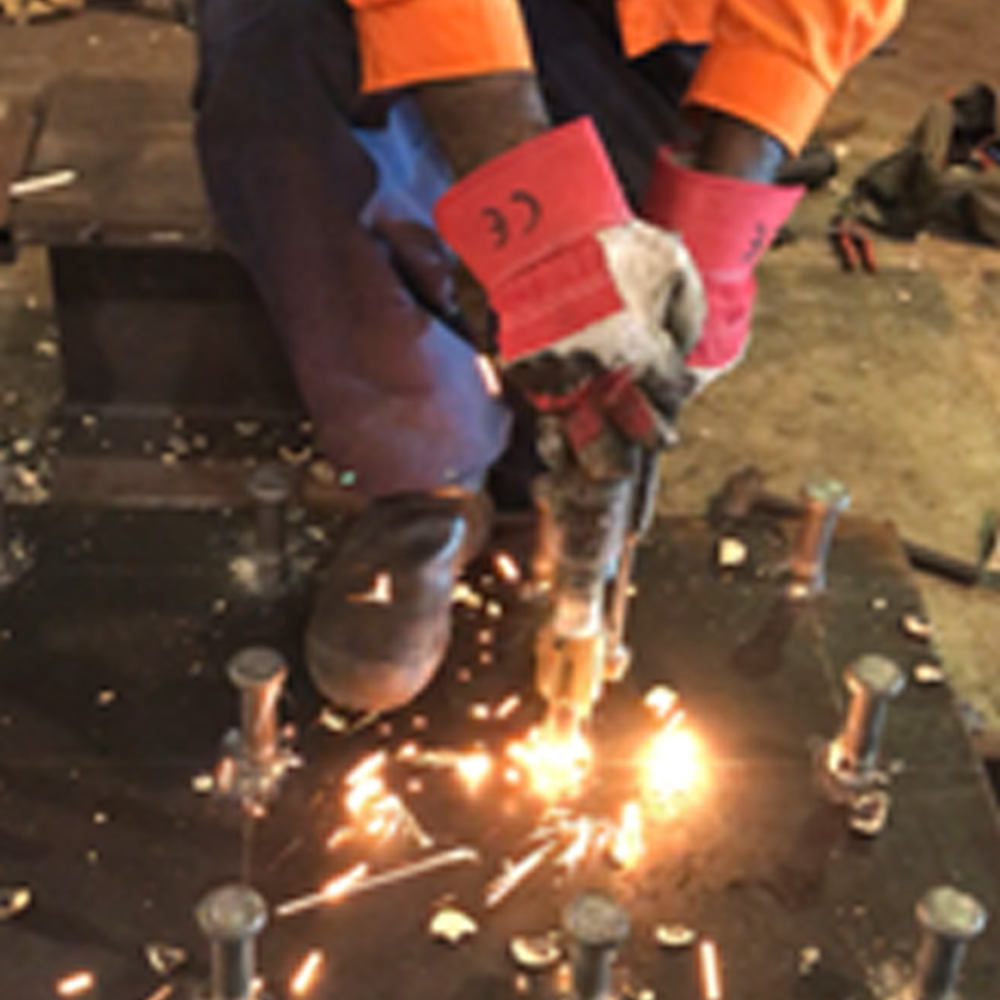MASON STUD WELDING DOES A PRETTY GREAT JOB IN KEEPING THINGS TOGETHER


Today, in the construction and marine/shipment industry MASON stud welding is widely adopted. There are many different types of studs to be welded. They are commonly used to manufacture precast/prestressed components, composite steel structures including threaded, headed and deformed bars.
In what aspect does mason stud welding keep things together?
1) It is a mechanised welding process
It produces a weld with a full fusion between the stud base and the base metal. It also provides a solid bond between a metal stud anchor and base metal. Commonly a steel plate is embedded in the concrete or the top flange of a steel beam.
2) It is more robust
It is undeniable that stud welds are more substantial than the base metal or stud material alone. The drawn arc stud welding produces consistent quality repeated over many welds. The installation is possibly done either by down-handed, horizontal and overhead positions.
3) It is produced in several materials
The most common are carbon or mild steel, stainless steel, aluminium, and certain applications. Environment and loading conditions require specialised materials. The ceramic ferrule is needed to properly weld all drawn arc weld studs. The exception is very small-diameter studs and studs with swift weld times (referred to as short-cycle studs).
The ferrule serves two purposes:
- It acts as a crucible to hold the molten metal around the stud’s base during the welding and cooling process.
- It shields the molten metal from contamination by air, which can adversely affect the weld.
How does stud welding equipment work?
A DC power automates from a self-contained generator or transformer/rectifier. Next, it passes through a welding control system. The power source and welding control system set to control the amperage and the arc duration or time.
The welding gun has a trigger-activated circuit that initiates the weld. After that, a lifting mechanism draws the stud away from the base material and create the welding arc, forming the molten pool. From the molten metal pool, it is now time to plunged the unmelted stud shank.
This type of industry has transformed from mechanical to solid-state welding equipment. The closed-loop controls have contributed significantly to simplify weld setups and better weld quality. Introductory training of operators in the stud welding process is the first step in successful production. Operators become adept with the general principle of the mechanism, guidelines and inspection techniques.
In summary
Stud welding is a long recognised and practical welding method. There is plenty to consider when approaching this kind of job. Specifying the correct stud type and the appropriate ceramic ferrule for the intended application is essential. Not to forget determining the stud diameter and the required after -weld length of the stud.
Proper specification and due diligence in specifying MASON Stud Welding will lead to a faster, more efficient and economic weld stud project.
For more information, please contact us at office@fasten.com.sg.



